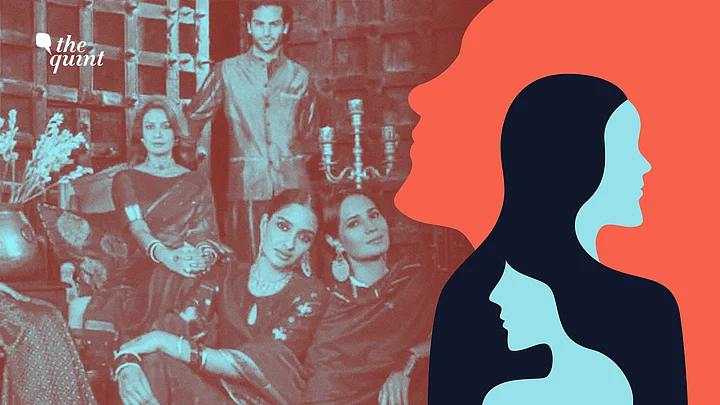What does it mean to be an Indian woman in today's 'New India'?
Having a forehead adorned by a bindi, of course! Haven’t you read the tweets?
Anand Ranganathan, an author and editor with the Rashtriya Swayamsevak Sangh (RSS)-affiliated Swarajya Magazine, commenting on the latest Fabindia advertisement controversy, tweeted:
The advertisement in question, titled ‘Jashn-e-Riwaaz’, has attracted the ire of the boycott brigade, for the promotion's purported misrepresentation of Diwali.
It depicts four women models – three in sarees and one in a salwar kameez. Now, far beyond me be it to question how these are not ‘traditional Hindu attires’, as BJP MP Tejasvi Surya has proclaimed in a tweet, kick-starting the whole controversy.
It is the blatant objectification of women in these tweets that is deeply troublesome, and not merely because women such as I don’t prefer our appearance being compared to poorly prepared Indian food items.
The plea, rather, is against the sermon by men on what 'completes' a woman's look.
The barrage of commentary that Surya’s tweet has pioneered details appropriate clothing for women, what the models should instead be wearing, down to the last tilak.
Is it necessary for Indian women, or even Hindu women, to wear ‘traditional Hindu' attires? What even is a 'traditional Hindu' attire?
The Cultural Burden
As women capable of choice and autonomy, the oft-meted out pontification on what we should or should not wear irks us.
The statements furthered by Surya, Ranganathan, and others of their tribe are a textbook example of how the patriarchal gaze persists in modern Indian society, how it preys on women, examines us as rightful commodities of culture, and ordains itself the guardian of our bodies.
The patriarchal system sits in judgment over women’s dressing, demanding that it adheres to 'tradition.' By doing so, it robs us of the agency to be the makers of our own choices, sartorial or otherwise.
“It is not about personal choice, it is about public propaganda,” states another traditionalist who insists upon the necessity of the bindis for the Fabindia models.
Personal preference goes for a toss when you’re made into a tool for ‘public propaganda’. Even as you believe you’re a free, autonomous, individual, you’re smacked down on occasion and reminded you’re not.
Indian women, in this manner, have the burden of conveying the orthodox cultural values that the patriarchal regime dictates and preserves, imposed on them.
And any deviation from the prescribed ideals for women, even one as little as a bindi, becomes a threat to the entire culture.
Fabindia Ad not First One to Elicit Reactions on Women’s Portrayal
The Fabindia advertisement is not the first instance where concern has risen over women’s portrayal and a supposed lack of ‘Indianness’ or ‘Hinduness’; it is merely the most recent.
In September this year, an advertisement issued by ethnic wear brand Manyavar had put some conservative knickers in a twist. The ad had depicted Alia Bhatt as a bride at a wedding, where Bhatt voices her objection against the kanyadaan, a Hindu ritual that denotes the ‘giving away’ of the bride to the groom’s family.
The bride’s reluctance towards the ritual was condemned by Hindutva vigilantes. The woman's act of self-assertion was seen as an assault on the long-running Hindu customs.
In October last year, jewellery brand Tanishq had released a promotional video for its collection called ‘Ekatvam’ (unity). The ad depicted the baby shower of a Hindu woman, who had married into a Muslim household. Alleging ‘love jihad’, Twitter trolls pounced on the ad with sharpened claws.
In positing that the daughter-in-law had been lured by the family for the purposes of ‘jihad’, the woman was once again denied agency by her self-appointed spokespersons.
Time and again, then, the portrayal of women's choice in advertisements have been censured as being injurious to socio-cultural mores.
To patriarchs and other associates, stop outsourcing the maintenance of your idea of ‘Indianness’ or 'Hinduness' to women.
We’re Indian enough without your help.
And as for the critics of the Fabindia promotion: I, as an Indian Hindu woman, feel myself one no matter what my attire.
A bindi, or the lack thereof, on my forehead is not a label that you can read me by.
(At The Quint, we question everything. Play an active role in shaping our journalism by becoming a member today.)
